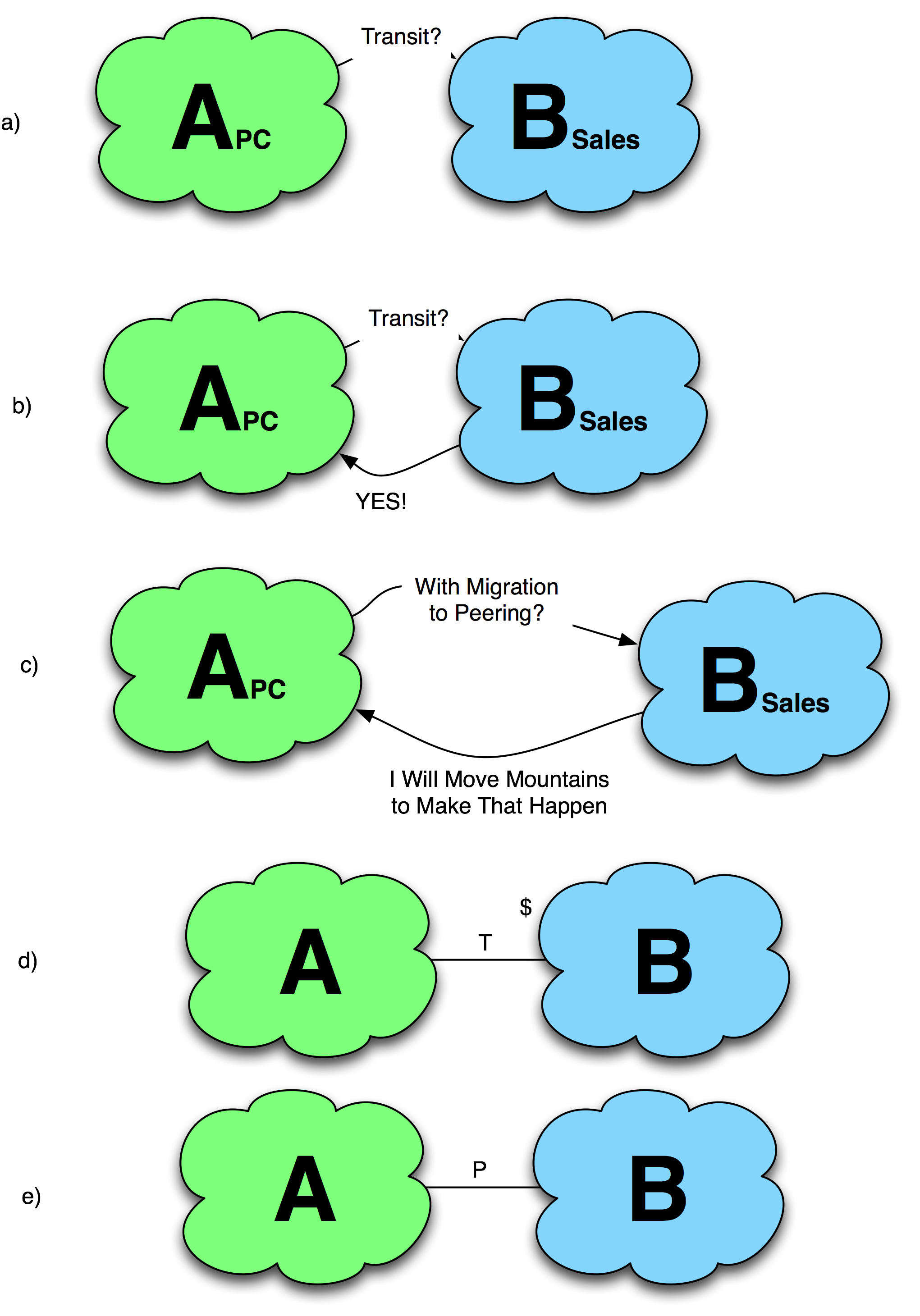Tactic 2. Internet Transit with Peering Migration
The Internet Transit with Peering Migration tactic leverages an internal advocate (the target ISP salesperson) to lobby for peering on behalf of the initiating peering coordinator. The underlying assumption is that a salesperson at the target ISP is more likely to respond to e-mails than its peering committee. The initiator proposes a transit purchase agreement with an explicit migration from a transit relationship to a peering relationship should the peering prerequisites at the target ISP be satisfied (Figure 11-12).
The difficulty with this tactic is that peering prerequisites evolve. Combine this reality with the fact that business interests (selling transit to the initiator) are at odds with allowing a migration to peering.
For example, Williams (an ISP at the time) executed this tactic with Sprint, and by the end of the contract term, the Sprint peering prerequisites had changed. Understandably, this situation led to heated discussions between the parties. Sprint suggested that Williams re-up for another term and try again for peering at the end of the next term. Perhaps a bit suspicious, Williams instead pursued the “end-run” tactic described next.

Figure 11-12. Enlisting an internal advocate - the target ISP salesperson.

